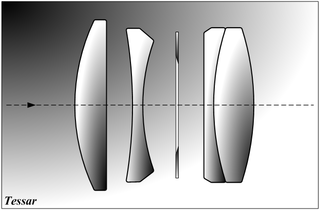In telecommunications, a cutback technique is a destructive technique for determining certain optical fiber transmission characteristics, such as attenuation and bandwidth.
A guided ray is a ray of light in a multi-mode optical fiber, which is confined by the core.
The optical power budget in a fiber-optic communication link is the allocation of available optical power among various loss-producing mechanisms such as launch coupling loss, fiber attenuation, splice losses, and connector losses, in order to ensure that adequate signal strength is available at the receiver. In optical power budget attenuation is specified in decibel (dB) and optical power in dBm.
In an optical communications link, the optical power margin is the difference between the optical power that is launched by a given transmitter into the fiber, less transmission losses from all causes, and the minimum optical power that is required by the receiver for a specified level of performance. An optical power margin is typically measured using a calibrated light source and an optical power meter.
In telecommunications, overfill is the condition that prevails when the numerical aperture or the beam diameter of an optical source, such as a laser, light-emitting diode, or optical fiber, exceeds that of the driven element, e.g. an optical fiber core. In optical communications testing, overfill in both numerical aperture and mean diameter is usually required. In polygonal mirror scanners, an overfilled type is one which uses each mirror facet at least in one dimension completely.
In fiber optics, the radiation angle is half the vertex angle of the cone of light emitted at the exit face of an optical fiber.
For an optical fiber, a step-index profile is a refractive index profile characterized by a uniform refractive index within the core and a sharp decrease in refractive index at the core-cladding interface so that the cladding is of a lower refractive index. The step-index profile corresponds to a power-law index profile with the profile parameter approaching infinity. The step-index profile is used in most single-mode fibers and some multimode fibers.
Acceptance angle may refer to:

A camera lens is an optical lens or assembly of lenses used in conjunction with a camera body and mechanism to make images of objects either on photographic film or on other media capable of storing an image chemically or electronically.

The Tessar is a famous photographic lens design conceived by the German physicist Paul Rudolph in 1902 while he worked at the Zeiss optical company and patented by Zeiss in Germany; the lens type is usually known as the Zeiss Tessar.

In optical engineering, the objective is the optical element that gathers light from the object being observed and focuses the light rays to produce a real image. Objectives can be a single lens or mirror, or combinations of several optical elements. They are used in microscopes, telescopes, cameras, slide projectors, CD players and many other optical instruments. Objectives are also called object lenses, object glasses, or objective glasses.
In optics a ray is an idealized model of light, obtained by choosing a line that is perpendicular to the wavefronts of the actual light, and that points in the direction of energy flow. Rays are used to model the propagation of light through an optical system, by dividing the real light field up into discrete rays that can be computationally propagated through the system by the techniques of ray tracing. This allows even very complex optical systems to be analyzed mathematically or simulated by computer. Ray tracing uses approximate solutions to Maxwell's equations that are valid as long as the light waves propagate through and around objects whose dimensions are much greater than the light's wavelength. Ray theory does not describe phenomena such as interference and diffraction, which require wave theory.

An optical fiber cable, also known as a fiber optic cable, is an assembly similar to an electrical cable, but containing one or more optical fibers that are used to carry light. The optical fiber elements are typically individually coated with plastic layers and contained in a protective tube suitable for the environment where the cable will be deployed. Different types of cable are used for different applications, for example long distance telecommunication, or providing a high-speed data connection between different parts of a building.

In light microscopy, oil immersion is a technique used to increase the resolving power of a microscope. This is achieved by immersing both the objective lens and the specimen in a transparent oil of high refractive index, thereby increasing the numerical aperture of the objective lens.
In an optical fiber, the normalized frequency, V, is given by
A condenser is an optical lens which renders a divergent beam from a point source into a parallel or converging beam to illuminate an object.
Cladding in optical fibers is one or more layers of materials of lower refractive index, in intimate contact with a core material of higher refractive index. The cladding causes light to be confined to the core of the fiber by total internal reflection at the boundary between the two. Light propagation in the cladding is suppressed in typical fiber. Improving transmission through fibers by applying a cladding was discovered in 1953 by Dutch scientist Bram van Heel. Some fibers can support cladding modes in which light propagates in the cladding as well as the core.








